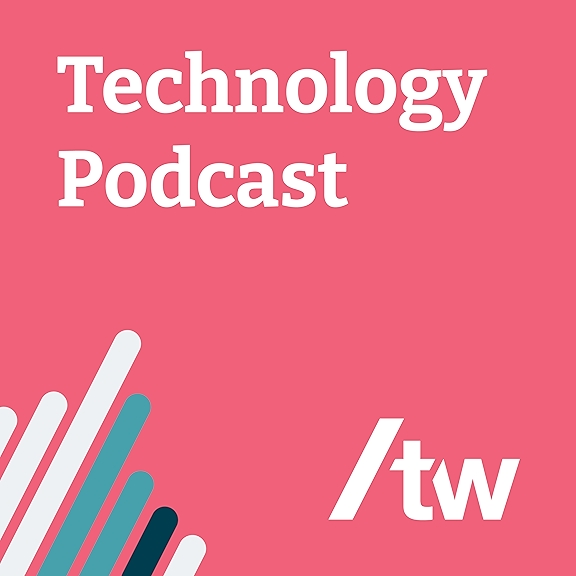
S13 E12 Digital Trailblazer Essential Lessons to Jumpstart Transformation and Accelerate Your Technology Leadership
I am joined by best-selling author, digital transformation leader, successful CIO, and founder of StarCIO, Isaac Sacolick. Recognized as a top 100 social CIO, blogger and industry speaker, Isaac has over 20 years of experience delivering innovative solutions, leading IT teams, and transforming underperforming businesses.
On this episode, we discuss his new book, “Digital Trailblazer: Essential Lessons to Jumpstart Transformation and Accelerate Your Technology Leadership,” his journey to becoming a digital transformation leader/CIO, how the audience can employ their skills as a digital leader, and more.
Here are some of the top takeaways you will receive from this episode:
-
The impact of generative AI from both an opportunity and a risk perspective
-
Navigating your role as a transformational CIO
-
Isaac’s transformational journey
-
How to use data and analytics to a strategic advantage
-
Developing and refining your ‘vision’
-
The clash between CIOs, sales leaders, and marketing leaders
-
Driving transformation and aligning with your organization’s offense
As a CIO and Business IT Leader here are More wins you will get by listening:
(4:32) Isaac: “So that was neural networks back in the ‘90s. We had no algorithms, there’s no tensor flow, there was no cloud, it was all very slow. But we were trying to solve some interesting things around computer vision, around predictions, a little bit of natural language processing.”
(5:19) Isaac: “Three years ago we went from growth to resolving a pandemic set of issues, to supply chain issues, to hybrid working issues. We did this huge pivot in 2020 that I talk about in chapter 10 of the book. I think we’re on the cusp of another major inflection with AI. What’s the impact of generative AI from both an opportunity and a risk perspective?”
(6:06) Bill: “What are the ways that you can have private AI within your organization versus public AI?”
(6:49) Isaac: “We need to look at the horizons and the frequency. Whatever that frequency was before, double it because things are just happening too fast.”
(7:20) Isaac: “Marketing departments are going to really be the first group hit with a whole set of point solutions that can help them generate graphics, videos, and content.”
(9:11) Bill: “It seems to me that ChatGPT and Microsoft’s investment is sort of the first interface that is real practical for human beings to use.”
(9:39) Isaac: “We’re going to have to see how that plays out, especially with Copilot. I think that’s going to change how people work. It’ll be interesting to see where the big four are going to start making their AI explainable or are we going to put regulations in place around that. Are companies going to firewall off this capability because they’re afraid of IP being leaked out to it?”
(11:04) Isaac: “If you don’t say anything to your employees, they’re going to see a green light there. They’re not going to know where to stop in terms of what they should and shouldn’t do because you haven’t provided guidelines.”
(14:47) Isaac: “I was a bit of a go getter in my young days. I joined a startup that was a hosting provider for applications provider for newspapers. And I tell people, that’s where I really learned transformation. We were looking at an industry that went through massive disruption. I got to see that front row in seat with my board.”
(19:16) Isaac: “10 years of being CIO in companies that were trying to figure out how to use data and analytics to a strategic advance and involve their products considerably from what they were doing before.”
(21:15) Isaac: “I used to say CIOs knew more about the boxes that hosted the data than the data itself. I think a lot has changed in the last 10-15 years. CIOs learned to build up their strengths and build up their vocabulary and understand the analytics space a little better.”
(22:18) Isaac: “The reality is that whatever we come in from our backgrounds when we become CIOs, we come in from a single or maybe two lanes of understanding. I think the biggest challenge for CIOs is expanding their own capabilities by hiring lieutenants who are highly versatile, who are two-way learners so that they can educate but also continuously learn.”
(23:24) Isaac: “Digital Trailblazer is a book of stories so that when you’re facing an issue, an opportunity for the first time, you’ve never had a blow up moment, a shock and awe moment. You’ve never stood in front of the board before. You’ve never had to convince an executive group to go and do an investment in an area they necessarily don’t want to do.”
(24:16) Bill: “Which percentage of the folks that are in there agree with you are going to be on your side? Which are the ones who are going to take shots at you? And then which percentage of that audience doesn’t really care? And then who is going to take ownership?”
(25:59) Isaac: “People like the idea of products until you really have that conversation around product management. It isn’t about taking everybody’s wishlist and coming up with a shiny object that checks all the boxes. It’s about trade-offs.”
(27:20) Isaac: “When you see alternatives, when you see new experiences coming in play and business models to the incumbent, that’s what disruption is right? You throw in new technology and that’s the accelerant.”
(28:42) Isaac: “The track that CIOs have had, we’ve come in from the operating world right? And now we’re trying to influence strategy. We’re trying to influence experience, both customer and employee experience.”
(29:26) Isaac: “How do you figure out how a salesperson is being incentive? How am I going to help you in your journey and what parts of your journey am I going to have to go and combat the status quo?”
(30:39) Isaac: “The best salespeople come in and say, “Okay I understand what your problem is. Let me connect you with people who have had similar problems. Let me show you what the outcome of a solution looks like if we implement the solution.” Best salespeople aren’t selling, they’re developing relationships and they’re explaining the value.”
(34:56) Isaac: “Any single solution area, any single technology has a bunch of labels underneath it to get sorted through; lots of choices, compliance factors, multiple vendors, etc.”
(35:33) Isaac: “The level by which we’re connecting the dots is no longer a three-tier application living on a couple servers right? We’re getting into how business is operating.”
(38:33) Bill: “You need a vision for your career and for the role and the position and speed of which we’re changing.”
(39:19) Isaac: “This isn’t an area where there’s a predefined playbook right? You’re always going to be looking at how your organization’s operating and saying, “I got to do things differently.” The world is changing in some fundamental way.”
(41:13) Bill: “Why do CIOs have so many problems with sales leaders and marketing leaders?”
(41:24) Isaac: “I don’t know if it’s a problem or have they struggled to develop relationships with them, is a little bit more work for them to understand their world. I think it again, goes back to our roots. We reported to CFOs, we were asked for ROI. And now we’re flipping the equation and saying, ‘Look I can’t transform the organization just by finding cost.’”
(43:59) Isaac: “What are your assumptions built into your growth model? What are you trying to sell? What are the unknowns for you to be able to hit those numbers. What are your risks and pain points?”
(45:52) Isaac: “If you’re a CIO driving transformation, you’ve got to align yourself with the offense. And part of the reason is, I know I can get help on the defensive side.”
(47:




















